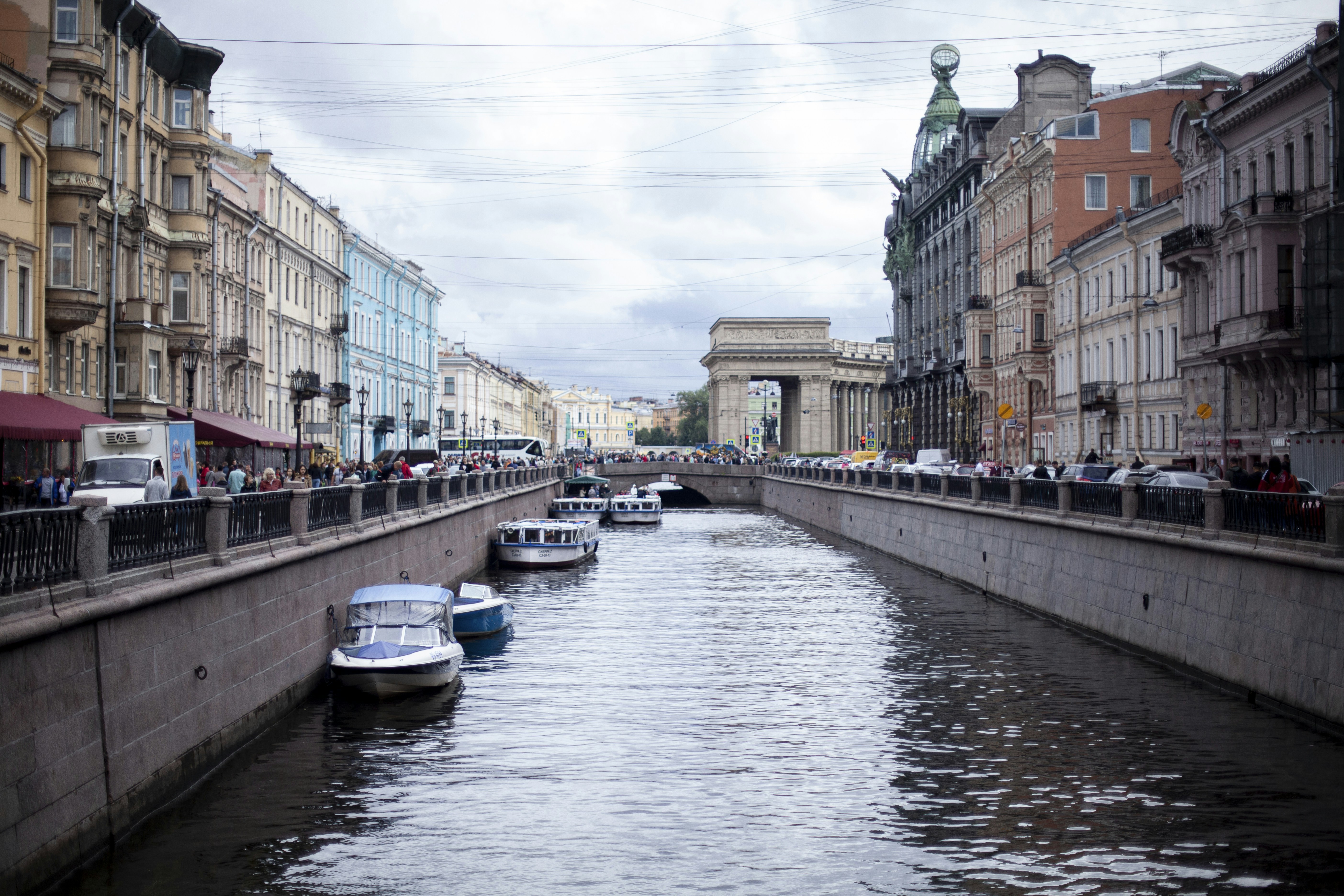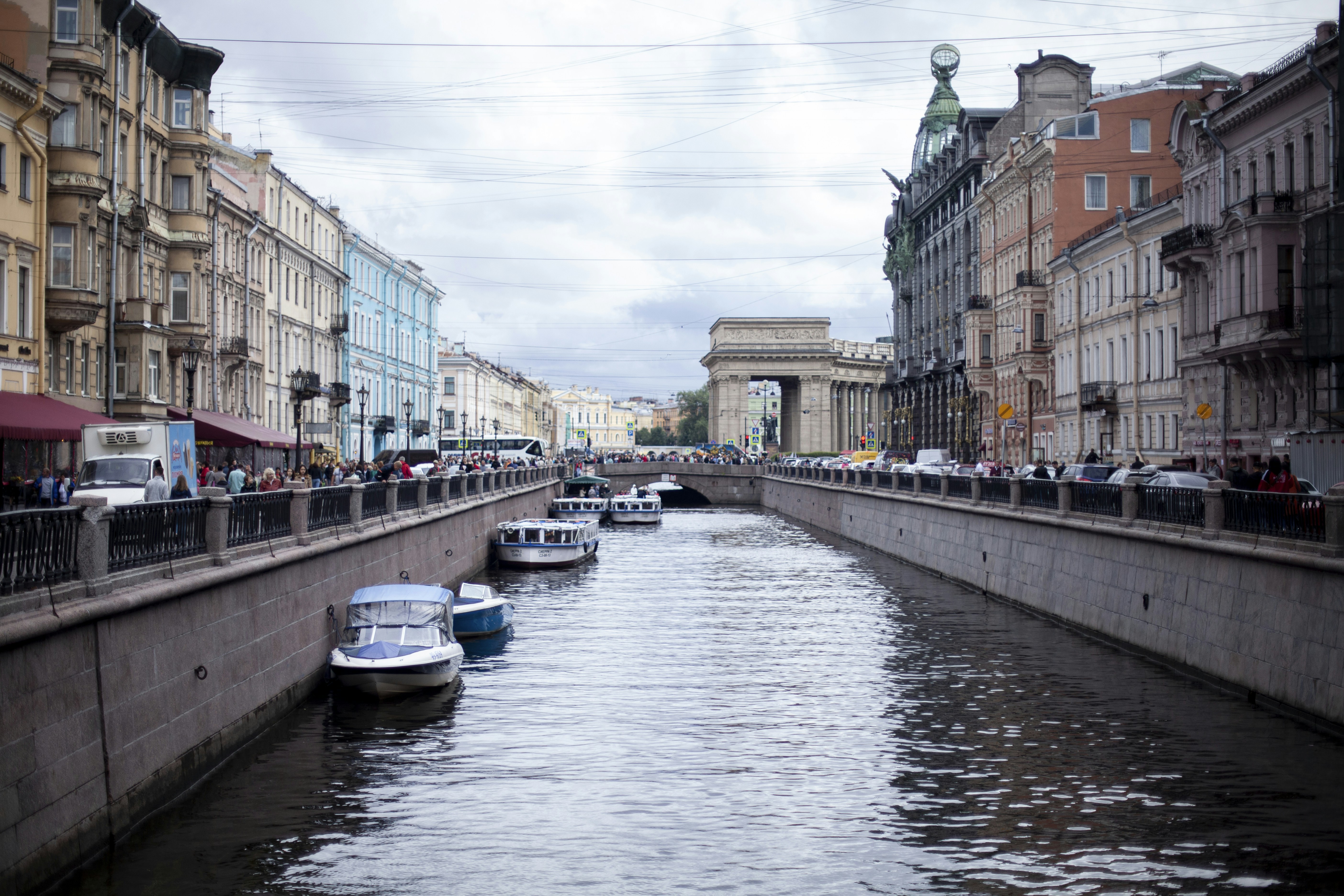Introduction to St. Petersburg
St. Petersburg, often referred to as Russia’s cultural capital, is a city steeped in a rich tapestry of history, art, and architectural grandeur. Founded by Peter the Great in 1703, the city served as the capital of the Russian Empire for over two centuries, cementing its status as a hub of political significance and cultural development. Renowned for its stunning architecture, St. Petersburg is home to the iconic Winter Palace, the intricate Church of the Savior on Spilled Blood, and the majestic Peterhof Palace, each a testament to the city’s opulent past.
The city’s historical importance is underscored by its role in pivotal events such as the Russian Revolution and World War II. St. Petersburg, then known as Leningrad, endured a grueling 872-day siege during World War II, showcasing the resilience and spirit of its inhabitants. Today, this history is preserved in numerous museums and monuments, offering a poignant glimpse into the city’s storied past.
St. Petersburg’s reputation for cultural excellence is further enhanced by its world-class museums and cultural institutions. The State Hermitage Museum, one of the largest and oldest museums in the world, boasts a vast collection of art and artifacts, drawing art enthusiasts from across the globe. The Mariinsky Theatre, a cornerstone of the city’s performing arts scene, presents breathtaking ballet and opera performances, continuing a tradition of artistic excellence.
Attracting millions of tourists each year, St. Petersburg offers a unique blend of historical richness and cultural vibrancy. Its picturesque canals, grand boulevards, and lush parks create an enchanting backdrop for exploration. Visitors are captivated by the seamless blend of old-world charm and contemporary allure, making St. Petersburg a must-visit destination for anyone seeking to experience the heart and soul of Russia’s cultural heritage.
Architectural Marvels
St. Petersburg stands as a testament to architectural splendor, boasting a myriad of landmarks that reflect its rich history and cultural significance. Among the city’s most iconic structures is the Winter Palace, an extraordinary example of Baroque architecture. Constructed in the mid-18th century, the palace served as the official residence of Russian tsars and now forms part of the renowned Hermitage Museum. Its opulent facades, intricate stucco work, and grand halls showcase the artistic prowess of the era.
The Hermitage Museum itself is an architectural marvel, encompassing five interconnected buildings, including the Winter Palace. Its vast collections and stunning interiors make it one of the largest and oldest museums in the world. The museum’s design elements range from Baroque exuberance to Neoclassical elegance, reflecting the evolving tastes and styles over centuries.
Another striking landmark is the Church of the Savior on Spilled Blood, a quintessential example of Russian Revival architecture. Erected on the site where Emperor Alexander II was assassinated, the church’s vivid mosaics, colorful onion domes, and ornate facades capture the essence of traditional Russian design. Its construction in the late 19th century was a deliberate nod to medieval Russian architecture, contrasting sharply with the Western European styles prevalent in the city.
Catherine Palace, located in the nearby town of Tsarskoye Selo, is yet another gem of Baroque architecture. Empress Catherine I commissioned the palace in 1717, and it was later expanded by her daughter, Empress Elizabeth. The palace is renowned for its lavish interiors, particularly the Amber Room, often referred to as the “Eighth Wonder of the World.” The intricate details and grand scale of Catherine Palace exemplify the opulence of the Russian imperial court.
The architectural styles of St. Petersburg—ranging from Baroque and Neoclassical to Russian Revival—contribute to the city’s unique aesthetic. These diverse influences are a testament to the city’s historical significance and its role as a cultural melting pot. Each landmark not only tells a story of architectural evolution but also enhances the city’s charm, making St. Petersburg a true cultural gem.
St. Petersburg stands as a testament to Russia’s rich cultural and artistic legacy, prominently showcased through its world-renowned museums and art galleries. At the forefront is the illustrious Hermitage Museum, one of the largest and oldest museums globally. Founded in 1764 by Catherine the Great, the Hermitage houses an expansive collection of over three million items, ranging from prehistoric artifacts to modern art. Its vast galleries feature masterpieces by iconic artists such as Leonardo da Vinci, Rembrandt, and Michelangelo, making it an indispensable repository of global heritage.
Another cornerstone of St. Petersburg’s cultural landscape is the Russian Museum, which offers a comprehensive overview of Russian art from the 10th century to the present day. Established in 1895, it boasts an impressive array of over 400,000 exhibits, including works by celebrated Russian artists like Ivan Aivazovsky, Ilya Repin, and Kazimir Malevich. The museum’s extensive collection provides invaluable insights into Russian history, culture, and artistic evolution, affirming its status as a crucial institution for preserving national heritage.
The Fabergé Museum adds a unique dimension to the city’s artistic offerings, dedicated to the exquisite works of the legendary jeweler Peter Carl Fabergé. Opened in 2013, the museum’s highlight is its exceptional collection of Fabergé eggs, originally created for the Russian Imperial family. These intricate and lavishly decorated eggs are emblematic of the opulence and craftsmanship of the late 19th and early 20th centuries. Alongside the eggs, the museum also showcases a variety of other luxury items, including jewelry, silverware, and objets d’art, reflecting the artistic excellence of the Fabergé workshop.
Collectively, these institutions not only preserve and celebrate Russia’s artistic and cultural heritage but also offer visitors a profound appreciation of global artistic achievements. Through their vast and diverse collections, the Hermitage Museum, the Russian Museum, and the Fabergé Museum solidify St. Petersburg’s reputation as a preeminent cultural hub, attracting art enthusiasts and scholars from around the world.
Literary and Musical Heritage
St. Petersburg boasts a profound literary and musical heritage that has left an indelible mark on both Russian and global culture. The city served as a muse for some of the most illustrious authors in history, including Fyodor Dostoevsky and Alexander Pushkin. Dostoevsky, known for his psychological depth and exploration of human nature, set many of his seminal works, such as “Crime and Punishment” and “The Idiot,” against the backdrop of St. Petersburg. The city’s atmospheric streets and historical landmarks are intricately woven into his narratives, bringing to life the complexities of its social fabric.
Alexander Pushkin, often hailed as the father of Russian literature, also found inspiration in St. Petersburg. His timeless works, such as “The Bronze Horseman” and “Eugene Onegin,” reflect the city’s grandeur and its tumultuous history. Pushkin’s legacy is so deeply interwoven with the city that his former residence has been transformed into the Pushkin House Museum, a testament to his enduring influence.
Beyond literature, St. Petersburg is a beacon of musical excellence. The Mariinsky Theatre, a cornerstone of the city’s cultural life, has been a premier venue for opera and ballet since the 19th century. Renowned for its opulent architecture and world-class performances, the Mariinsky Theatre has hosted legendary artists and premiered works by iconic composers like Tchaikovsky, Rimsky-Korsakov, and Shostakovich. Its significance in the world of performing arts remains unparalleled, continually drawing enthusiasts from around the globe.
St. Petersburg’s literary and musical legacy continues to resonate in contemporary culture. Modern writers and musicians draw inspiration from the city’s rich history, ensuring that its cultural contributions remain vibrant and relevant. Through literature and music, St. Petersburg perpetuates its status as a cultural gem, offering a timeless source of inspiration and creativity.
Cultural Festivals and Events
St. Petersburg, a city renowned for its rich cultural heritage, is home to a plethora of vibrant festivals and events that captivate both locals and international visitors. Throughout the year, the city pulsates with artistic fervor, offering numerous opportunities for cultural immersion and celebration.
One of the most iconic events in St. Petersburg is the White Nights Festival, held annually from late May to early July. This festival celebrates the phenomenon of the “White Nights,” when the sun barely sets, and the city is bathed in a perpetual twilight. The White Nights Festival features an array of performances, including classical music concerts, opera, ballet, and theater productions, all set against the backdrop of St. Petersburg’s stunning architecture. The Scarlet Sails event, a highlight of the festival, sees a spectacular light and fireworks show accompanied by a tall ship with scarlet sails gliding along the Neva River.
Another prominent event is the International Ballet Festival, held in March at the historic Mariinsky Theatre. This festival brings together the world’s most celebrated ballet companies and dancers, showcasing both classical and contemporary works. The International Ballet Festival not only highlights the city’s illustrious ballet tradition but also serves as a platform for artistic exchange and innovation.
The St. Petersburg International Cultural Forum, held every November, is a significant event that attracts artists, cultural professionals, and enthusiasts from around the globe. This forum features a diverse program of exhibitions, performances, workshops, and discussions, covering various aspects of culture and the arts. It provides a unique opportunity for cultural dialogue and collaboration, reinforcing St. Petersburg’s status as a global cultural hub.
These festivals and events are a testament to St. Petersburg’s enduring commitment to the arts. They not only celebrate the city’s artistic heritage but also foster a sense of community and shared cultural identity. For visitors, these events offer an unparalleled glimpse into the vibrant cultural life of St. Petersburg, making it a must-visit destination for art and culture aficionados.
Hidden Gems and Local Experiences
While St. Petersburg is renowned for its grand palaces and well-known museums, exploring its lesser-known attractions can provide a deeper, more intimate understanding of the city’s rich cultural tapestry. One such hidden gem is the Peterhof Palace gardens. Often overshadowed by the grandeur of the palace itself, the gardens offer a tranquil escape with their meticulously landscaped grounds, cascading fountains, and enchanting grottos. A stroll through these gardens feels like stepping into a fairy tale, and it provides a serene contrast to the bustling city life.
Another must-visit is the Yusupov Palace, which, though less frequented than the Hermitage, holds its own charm and historical significance. The palace is not only an architectural marvel but also the site of Rasputin’s infamous assassination. A guided tour through its opulent rooms and hidden chambers offers a captivating glimpse into the lives of one of Russia’s wealthiest families.
For those seeking to immerse themselves in local culture, St. Petersburg’s vibrant markets are a treasure trove. Markets like Kuznechny and Sennoy offer everything from fresh produce to traditional Russian delicacies. Engaging with local vendors and sampling regional foods provides an authentic taste of everyday life in the city.
To truly experience St. Petersburg, one must explore its picturesque canals. A canal tour offers a unique perspective of the city’s architectural splendor, with its baroque and neoclassical buildings mirrored in the waterways. This leisurely activity allows visitors to appreciate the city’s layout and history from a different vantage point.
Additionally, the city’s local cafes are perfect for unwinding and soaking in the local atmosphere. Cafes like the literary-themed Cafe Singer or the cozy Pyshechnaya, known for its delicious doughnuts, offer a window into the city’s thriving café culture. Pairing a visit to these cafes with a walk through St. Petersburg’s diverse neighborhoods, such as the artsy Pushkin Street or the historic Kolomna district, reveals the layers of the city’s cultural and social fabric.
Enter your email to get the Latest Updated Exploring News and Topics
Discover more from atozexplore.com
Subscribe to get the latest posts sent to your email.







